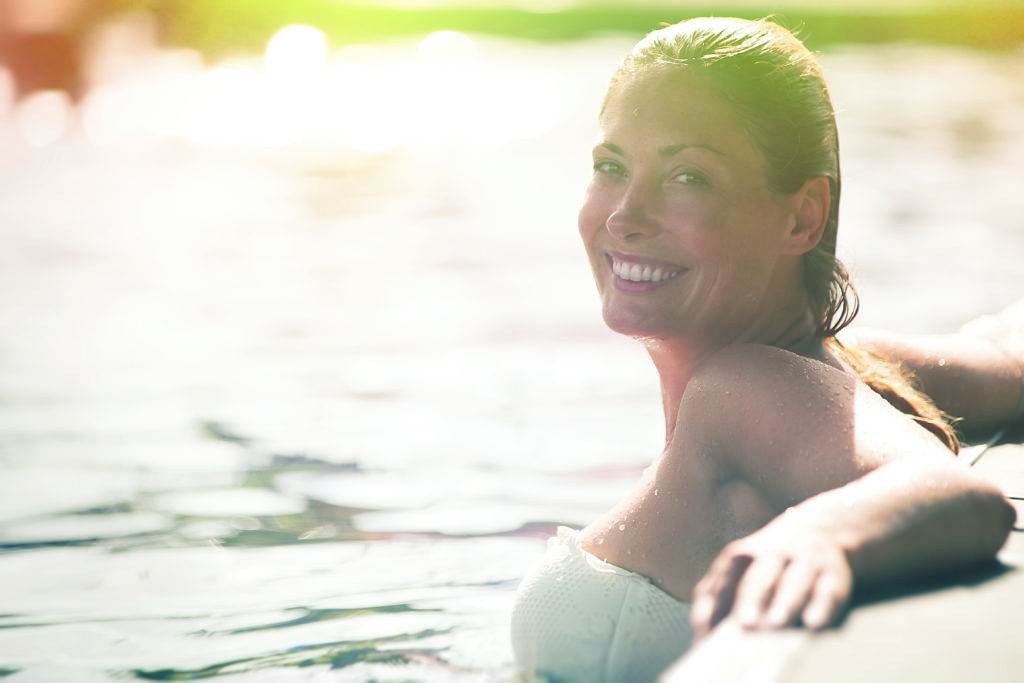Taking Care of Your Skin
BY SIMONE DE WINTER
Are you in the habit of applying sunscreen as part of your daily skin regimen? Do you routinely apply it to your children’s skin before sending them to school or summer camp? There are multiple factors to consider. First, what is in sunscreen, anyway? What is the difference between UVA and UVB rays, and how is sunscreen protecting or harming us? What is the function of vitamin D3? And most importantly, how is our skin, like the rest of our body, being nourished? These are complicated and important questions but here is a quick overview:
UVA and UVB
There are two primary kinds of ultraviolet (UV) rays, UVA and UVB. Always present, UVA rays account for 95% of all radiation touching the earth’s surface. UVA rays penetrate glass and go deeply into our skin. UVB rays penetrate more superficially and are not always present; their intensity varies by season and location, and they are usually strongest between 10am and 4pm. UVB rays are responsible for causing painful skin-reddening sunburns at the superficial (epidermis) levels. Because UVA rays stimulate tanning they were traditionally considered to be less intense and to not contribute to sun damage. For that reason sunscreens were originally designed to protect against only UVB rays. The SPF (Sun Protection Factor) label that you see on sunscreen packaging measures only UVB.
Now we know that UVA rays, while they are responsible for tanning, are at least as damaging as UVB since they cause premature skin aging, wrinkling, and certain kinds of cancer. Fortunately, new “broad spectrum” sunscreens have been developed to block both types of rays, but you have to make sure to shop properly at the store. Choose broad spectrum sunscreens that are non-toxic with natural ingredients such as zinc oxide or titanium dioxide. The Environmental Working Group (EWG) publishes a list of those on its Skindeep web-site. Use a minimum of SPF 15.
Excessive exposure to the sun can cause skin cancer, especially when the skin is pale. But sun is not the only cause of problems. The skin is a protective barrier and a detox organ. For our skin cells to function properly they needs nutrition and hydration, from the inside as well as from the outside. Like any other part of our body, if we do not give our skin proper care it is likely to get sick. We need to be vigilant about what we put into our bodies and onto our skin because it ends up in the blood. This is the cycle—our blood in turn nourishes the skin.
Vitamin D3
Paradoxically, as a society we’ve been using more sunscreen, but skin cancer incidents are increasing. What’s going on? Vitamin D3 is part of the equation. Those same UVB rays that penetrate the outermost epidermis are also the ones that synthesize beneficial vitamin D3. Vitamin D3 is hard to obtain from dietary sources so it’s good to get a minimum of daily sun exposure to supply it. Outside the months between April and October, UVB rays are barely present, so summer is the best time to stock up for the year. A daily dose of only 15 to 20 minutes of summer rays between 10am and 4pm will do the job.
Yes, you read it right—vitamin D protects the skin from the sun and a minimum daily sun exposure is important. So how do we protect the skin and at the same time ensure sufficient vitamin D3 synthesis? This is controversial but supplementation is one good option. An even better option is taking good care of the skin in order to help it withstand the damaging effects of a daily vitamin D3 sunbath. Ironically, any sunscreen we use, toxic or non toxic, cancels the synthesis of protective vitamin D3. Sunscreens are best used for any prolonged exposure exceeding 15 to 20 minutes.

Skincare
Outside of covering the skin, a routine of keeping the skin cells healthy and well-nourished goes a long way toward preventing skin disease. By eating cooling foods such as pears, apples, melons, cucumbers, pomegranates, and summer squashes we help hydrate our skin. The skin also likes herbs such as coriander, cilantro, and turmeric. Regularly spraying the skin with rose or lavender hydrosols is beneficial as is a daily massage with organic oils. These routines cool the skin and feed it high-functioning nutrients, especially in the dry summer. Meanwhile, spicy foods, condiments, coffee, and alcohol are dehydrating and increase sun sensitivity.
When bathing, avoid excessively hot water and minimize the use of harsh soaps, which strip the skin of its natural oils. When the skin is dry, dull, or pasty, it is unhealthy and screaming for attention. Dry brushing is an easy way to stimulate dull skin. Before taking a (not too hot) shower use a brush or a loofah to massage the skin in the direction of the heart to stimulate the lymphatic system. In case of sunburn use those same hydrosols and aloe vera gel to cool and heal the skin. Very regularly apply those same oils, maybe adding vitamin E oil and/or essential oils of lavender, rose, jasmine, vetiver, and chamomile to reverse the dryness.
The skin is our largest organ and it depends on the sun for wellbeing. If we tend and nourish ourselves from the inside out and from the outside in, our healthy skin will be better able to handle the needed benefits of moderate summer sun.
Simone de Winter is an Ayurvedic practitioner of 15 years in Marin County. MarinAyurveda.com.